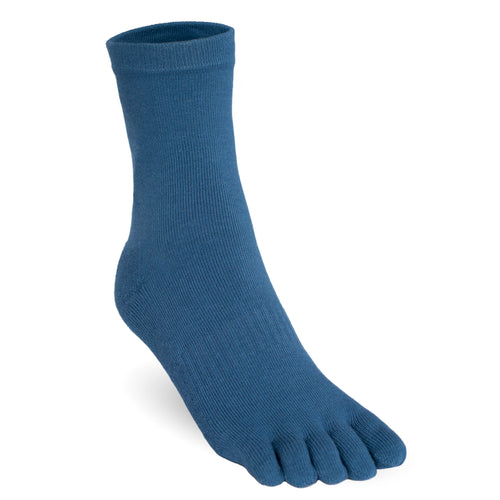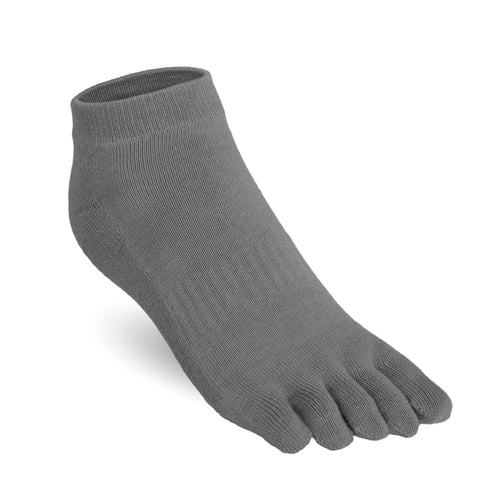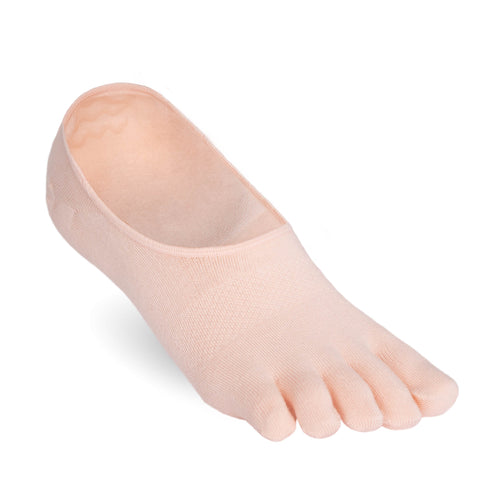Proper Body Alignment From Head to Toe: The Importance of Posture
Correct body alignment, from head to toe, is an integral part of foundational health. Your joints and muscles can experience significant undue stress, resulting in chronic pain and increasing the chance of an injury. Proper body alignment can help to greatly reduce these stresses and sources of some chronic pain, as well as help to improve blood circulation and overall mood.
Whether you want to enhance mobility or improve your natural toe alignment, adopting better posture will help you succeed.
Testing for Proper Body Alignment
One of the most common, and easiest, tests you can do right now to test for proper body alignment is called the “Wall Test.” This test, as you can imagine, involves a wall or flat surface that can help give you an idea of how good your overall posture is, focusing on several unique points of contact. To do this easily at home, simply follow these 5 steps:
- Find an open wall (making sure to clear the area of furniture or other barriers). With your feet shoulder width apart and about two feet from the wall, stand with your back to the wall, making sure that THREE UNIQUE POINTS are all in contact with the wall: your head, shoulders, and butt.
- Secondly, to continue testing for proper body alignment, slide your hand behind the small of your back, with your palm flat on the wall. The ideal lower back curve should allow a small space so your hand can just barely fit between your lower back and the wall.
- During the step above, if you find that there is too much space behind your back such that your hand has room to wiggle around, pull your belly button toward the spine, which will flatten the curve in your back, thus bringing it closer to the wall.
- During the second step above, if there is too little space so that your hand cannot fit at all behind your back, try arching your back slightly. This should allow your hand to slide behind your back, achieving that ideal space where it can fit but does not have too much room to wiggle around.
- Now, take several deep breaths in this proper body alignment position. As you move away from the wall, do your best to keep your newfound posture. If you find yourself slacking, you can always go back to the wall and realign yourself!
The Negative Effects of Improper Body Alignment
Improper body alignment can have negative effects, including multiple kinds of body stress and pian.
Headaches, Jaw and Neck Pain
Inadequate posture can exert excess pressure on the muscles at the back of your head, neck, and jaw. This strain can lead to the compression of adjacent nerves, causing tension-type headaches or muscle-spasm-induced headaches.
A simple trick? You can tell you’re not using proper body alignment when your head juts forward. This can stress the muscles beneath your chin and leads to excessive strain on your temporomandibular joint, often referred to as TMJ. This can cause serious discomfort, and a clicking sensation in your jaw, along with challenges in mouth opening, as well as headaches and neck discomfort.
Shoulder Pain
The rotator cuff is comprised of a cluster of muscles and tendons linking your upper arm to your shoulder. Poor posture can lead to muscle tightness and weakness, which can in turn result in serious pain and reduced strength.
Additionally, adopting a forward, hunched posture may lead to the pinching or impingement of these tendons. Over time, not using proper body alignment in this way can escalate into a tear in the rotator cuff tissue, a more severe injury that can bring about substantial discomfort and weakness, potentially seriously interfering with your everyday life.
Back Pain
Back pain can be caused by a variety of underlying issues, such as herniated disks or osteoporosis. However, these underlying conditions are always made worse with poor posture. Poor posture can also lead to chronic back pain that can seriously impact the quality of your life.
Knee, Hip and Foot Pain
Weakness in muscles, along with tightness, imbalances, and limited flexibility, coupled with misalignment of your hips, knees, and feet, can impede the smooth movement of your kneecap, or patella, over your femur—another reason you should prioritize stretching, strength exercises, and proper body alignment. If you don’t, the resultant friction can lead to discomfort and irritation at the front of the knee, a condition referred to as patellofemoral pain.
Additionally, improper alignment of the feet and ankles can contribute to plantar fasciitis, a condition characterized by inflammation of the thick band of tissue connecting the heel to the ball of the foot, resulting in heel pain.
Fatigue and Breathing Problems
Improper posture can limit the expansion of your rib cage and put pressure on your diaphragm. This can result in decreased lung capacity, leading to shallow or strained breathing, as well as feelings of fatigue and reduced vitality, ultimately impacting your overall quality of life.

Proper Body Alignment for a More Comfortable Life
There are many benefits to properly aligning your body and improving your posture. To reduce the risk of experiencing chronic pain and injury, test for proper body alignment and begin to adopt better posture in your everyday routines.
Learn how a pair of Serasox toe socks helps maximize comfort and improve toe alignment, jumpstarting your journey to better posture and proper body alignment. Your body will thank you for it!





